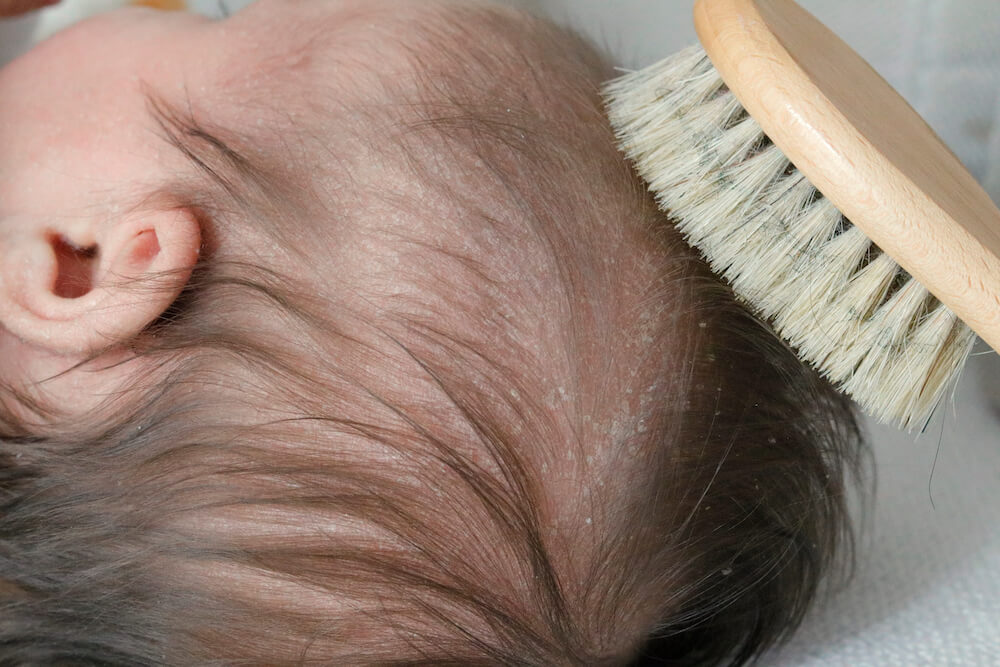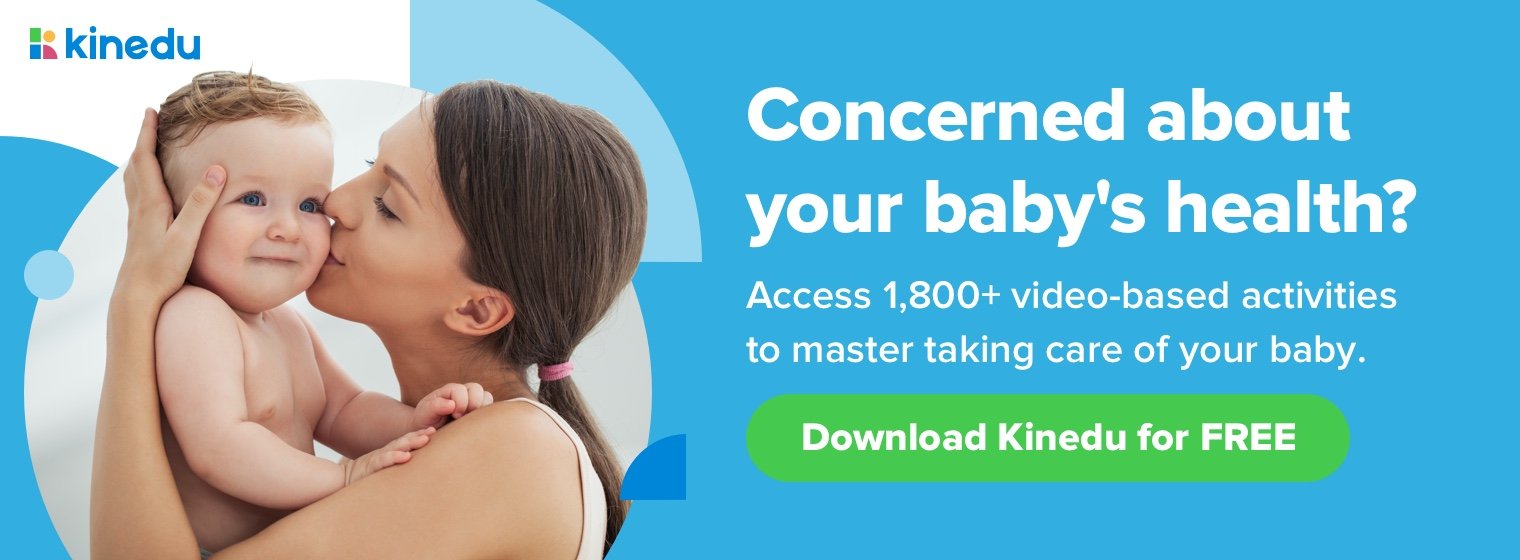What is cradle cap? Learn how to diagnose and treat this common skin condition on your baby and when to contact your pediatrician.
As new parents, it is normal to analyze and check every inch of your new baby during the first few months. One of the most common things you may come across is red, scaly patches on your little one’s scalp.
Before you start to worry or panic, it might help you to know that this condition is harmless, common, and treatable. Most often referred to as cradle cap, this skin condition generally appears sometime in the first 3 months of your baby’s life but can happen anytime within the first year.
So what is cradle cap? And more importantly, what can you do to help prevent it and treat it? We’re giving you all the important information you need to understand this very common condition.
What is Cradle Cap?
Cradle cap is the term for seborrheic dermatitis when it appears on a baby’s scalp. This condition presents itself as scaly patches and sometimes red patches on the top of your little one’s head. Sometimes, it can even appear as very thick, crust-like scales.
Babies are most likely to develop cradle cap anytime between the first few weeks up to the first year of their lives. It is noninfectious, and although it looks like it may cause discomfort, cradle cap is not itchy or painful for your little one.
You might even notice these patches on other parts of your baby’s body. Seborrheic dermatitis can commonly occur on the diaper area, face, neck, or trunk.
How Do Babies Get Cradle Cap?
The exact cause of cradle cap is still unknown for sure, but it is believed to be caused by an overproduction of oil from your newborn or infant’s sebaceous glands. When the sebaceous glands produce too much oil, skin cells become trapped on your little one’s scalp, resulting in the scales of old skin and red irritation.
Some researchers believe that cradle cap may be a direct result of certain pregnancy hormones that stay in a baby’s system after they are born. Regardless of what makes the oil glands go into overdrive, it is important to know that cradle cap is not contagious, nor is it caused by poor hygiene, an infection, or an allergy.
If your baby has cradle cap, it is not because of anything you did or did not do as their caregiver. Many new parents are able to diagnose cradle cap on their own, but if you are concerned about your little one’s skin, your pediatrician can quickly confirm whether or not your baby has seborrheic dermatitis.
How To Treat Cradle Cap
Once you notice the telltale signs of cradle cap on your child, you will most likely want to know how to get rid of cradle cap. Most cases of this condition will clear up on their own over a few weeks to a few months.
There are some at-home treatments that can be effective at clearing up cradle cap. Remember that every baby will react differently, so you may have to try more than one to find out what works best for you.
Try these treatments for cradle cap at home:
Mineral Oil or Vaseline
Start by massaging either of these products gently into your baby’s scalp to soften and loosen the dry and scaly areas. Once softened, gently shampoo your baby’s scalp to remove the trapped skin from the surface of the scalp.
Brush Your Baby’s Hair Regularly
Use a soft-bristled baby brush multiple times a day to help remove dry skin. Brushing after shampooing is also encouraged to remove excess scales while they are already pre-softened. Be sure to wash your brush each time with soap and water to remove the skin and excess oils.
Breast Milk
If you are breastfeeding your baby, you will soon discover all the amazing benefits of using breastmilk to treat certain common conditions your baby might experience.
Rubbing breast milk into the dry, irritated areas of your baby’s scalp can help loosen the dry skin and soothe the redness.
If your baby’s cradle cap seems to be getting worse, or they have a particularly bad case, your pediatrician may suggest and prescribe mild treatments for cradle cap. These would include a medicated shampoo or corticosteroid cream or lotion.
For more support, be sure to download Kinedu to access 1,800+ video-based activities to master taking care of your baby!
Can I Prevent Cradle Cap?
Unfortunately, there really is no way for you to prevent your baby from getting cradle cap. Because its exact cause is still unknown, there is no way to ensure your little one’s scalp stays free from this condition.
However, we do know that sweating can exacerbate the symptoms of cradle cap in babies, so it is a good idea to keep your baby’s head cool and dry as often as possible.
The best thing you can do for your baby if they end up with cradle cap is to care for it as best you can with the treatments listed above. Make sure to keep an eye on the condition and if you notice any changes or it worsening, be sure to contact your pediatrician.
Call your pediatrician if you notice:
- heavy flaking or brownish patches and yellow crustiness
- signs of a yeast infection, including bright red areas that are painful or itchy
- your baby’s scalp begins draining fluid or develops pus
Things To Remember About Cradle Cap
Cradle cap is not an infection or a contagious disease. You can expect to see cradle cap develop anytime in the first year of your child’s life. In almost all cases, cradle cap will clear up on its own and there is little need for medical intervention.
Now you know what is cradle cap, and that you can treat it at home safely and effectively with mineral oil, regular brushing, and shampooing. If you need extra support, be sure to download Kinedu to access more than 1,800 video-based activities to help you master caring for your baby!








